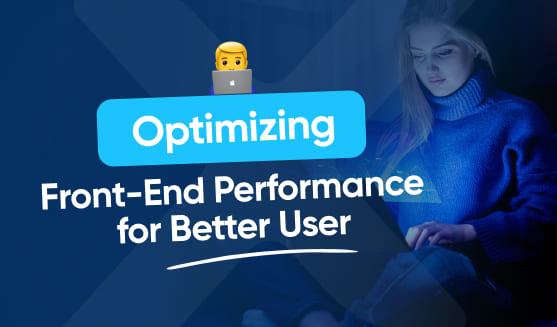
In the fast-paced digital world we live in, user experience plays a crucial role in the success of any website or application. One of the key factors that can significantly impact user experience is front-end performance. In this article, we will explore the importance of front-end performance, the key factors affecting it, techniques for optimizing it, monitoring its progress, and maintaining its efficiency.
Understanding Front-End Performance
Defining Front-End Performance
Front-end performance refers to the speed and efficiency at which a website or application renders and delivers its content to the user’s browser. It encompasses various aspects, including website layout, server response time, and the optimization of images and other content. Ultimately, front-end performance determines how quickly users can interact with a website or application.
One crucial element of front-end performance is the use of efficient coding practices. This includes minimizing the number of HTTP requests, leveraging browser caching, and reducing the size of files through techniques like minification and compression. By implementing these strategies, developers can enhance the speed and responsiveness of a website, leading to improved user engagement and satisfaction.
Importance of Front-End Performance in User Experience
Front-end performance directly influences user experience. In today’s fast-paced world, users expect websites and applications to load quickly and be highly responsive. Studies have shown that even a minor delay in page load time can significantly impact user satisfaction and conversion rates. Therefore, optimizing front-end performance is crucial for providing a seamless and enjoyable user experience.
Moreover, front-end performance plays a critical role in search engine optimization (SEO). Search engines like Google consider website speed as a ranking factor, with faster websites often receiving higher placement in search results. By prioritizing front-end performance optimization, businesses can not only enhance user experience but also improve their visibility and organic traffic through improved search engine rankings.
Key Factors Affecting Front-End Performance
Website Design and Layout
The design and layout of a website can greatly impact its performance. A well-optimized website design considers factors such as minimizing the number of HTTP requests, reducing the use of heavy scripts, and prioritizing content that is critical for initial page rendering. By following best practices in website design, developers can enhance front-end performance and ensure a smoother browsing experience.
Additionally, responsive design plays a crucial role in front-end performance. Ensuring that a website is optimized for various devices and screen sizes can improve user experience and engagement. Responsive design allows content to adapt seamlessly to different resolutions, providing a consistent and visually appealing experience across devices.
Server Response Time
The response time of the server hosting a website or application is another crucial factor in front-end performance. Slow server response times can lead to delays in content delivery and negatively impact user experience. Optimizing server infrastructure, leveraging caching mechanisms, and employing efficient content delivery strategies can significantly improve server response time and overall front-end performance.
Furthermore, implementing a content delivery network (CDN) can help reduce server response times by distributing content across multiple servers geographically closer to users. This can decrease latency and improve loading speeds, especially for users accessing the website from different regions around the world.
Image and Content Optimization
Images and other content on a website can significantly contribute to slower load times. Proper image and content optimization techniques, such as compressing images without compromising quality, minifying CSS and JavaScript files, and utilizing lazy loading, can greatly enhance front-end performance. By reducing the size and number of assets that need to be loaded, users can experience faster page load times and smoother interactions.
Moreover, implementing responsive images that are appropriately sized for different devices can further improve performance. Serving images in the correct dimensions based on the user’s viewport can reduce unnecessary bandwidth usage and speed up load times, especially on mobile devices with limited data connections.
Techniques for Optimizing Front-End Performance
Minimizing HTTP Requests
One of the most effective ways to optimize front-end performance is to minimize the number of HTTP requests required to load a page. This can be achieved by merging and minifying CSS and JavaScript files, combining multiple images into sprites, and utilizing browser caching. By reducing the number of requests, the website or application can load faster and provide a better user experience.
Furthermore, another strategy to reduce HTTP requests is to utilize asynchronous loading for resources that are not critical for the initial page render. This approach allows essential content to be displayed promptly, while non-essential resources can be fetched in the background. As a result, users can start interacting with the page sooner, enhancing the overall perceived performance of the website or application.
Using Content Delivery Networks (CDNs)
Content Delivery Networks (CDNs) can significantly improve front-end performance by distributing website content across multiple servers located worldwide. This reduces the geographical distance between the user and the server, leading to faster content delivery. By leveraging CDNs, websites and applications can benefit from reduced latency and improved load times, resulting in a more responsive user experience.
In addition to reducing latency, CDNs also provide enhanced security features such as DDoS protection and SSL encryption. By offloading traffic to distributed servers, CDNs can help mitigate the impact of potential cyber threats and ensure a more secure browsing experience for users. This added layer of protection further enhances the performance optimization efforts of front-end development.
Implementing Lazy Loading
Lazy loading is a technique that defers the loading of non-critical assets, such as images, until they are needed. By implementing lazy loading, websites and applications can prioritize the initial rendering of essential content, allowing users to interact with the page quickly. Non-critical assets are loaded asynchronously, improving performance by reducing the amount of data that needs to be transferred initially.
Moreover, lazy loading can also be applied to videos, iframes, and other multimedia elements, ensuring that only the visible content is loaded upfront. This approach not only speeds up the initial page load but also conserves bandwidth by fetching additional assets only when they come into view. By strategically implementing lazy loading, front-end developers can create a more efficient and user-friendly browsing experience for visitors.
Monitoring Front-End Performance
Ensuring optimal front-end performance is a crucial aspect of creating a seamless user experience. Continuous monitoring is key to identifying and addressing performance issues before they impact user satisfaction. By implementing a robust monitoring strategy, developers can proactively optimize their websites or applications for speed and efficiency.
Tools for Tracking Front-End Performance
Achieving optimal front-end performance requires continuous monitoring. Various tools, such as Google PageSpeed Insights, WebPageTest, and Lighthouse, provide valuable insights into website performance metrics. These tools analyze factors such as page load times, server response times, and asset sizes, helping developers identify areas for improvement and track progress over time.
Additionally, tools like GTmetrix and Pingdom offer detailed performance reports, highlighting opportunities for optimization. These tools not only assess performance metrics but also provide actionable recommendations for improving front-end performance. By leveraging a combination of these tools, developers can gain a comprehensive understanding of their website’s performance and make informed optimization decisions.
Key Performance Indicators (KPIs) for Front-End Performance
To effectively monitor front-end performance, developers should establish key performance indicators (KPIs) that align with the goals of their website or application. These KPIs could include metrics such as page load time, time to first byte, and the number of HTTP requests. By regularly tracking these KPIs, developers can identify bottlenecks and measure the impact of optimization efforts.
Furthermore, tracking user-centric metrics like First Contentful Paint (FCP) and Time to Interactive (TTI) can provide valuable insights into the perceived performance of a website. Understanding how users experience and interact with a site is essential for delivering a fast and engaging user experience. By prioritizing these user-centric KPIs, developers can ensure that their optimizations directly benefit the end-user experience.
Maintaining Optimized Front-End Performance
Regular Performance Audits
Front-end performance is not a one-time fix but an ongoing optimization process. Regular performance audits involve analyzing website code, asset sizes, and server response times to identify potential areas for improvement. By conducting periodic audits, developers can ensure that their website or application continues to deliver optimal front-end performance and a superior user experience.
Updating and Upgrading Systems Regularly
To maintain optimized front-end performance, it is essential to keep website infrastructure and software up to date. This includes updating server software, content management systems, and employing the latest web development practices and technologies. By staying current with technological advancements, developers can leverage new optimizations and enhancements to keep their front-end performance at its peak.
Training and Education for Development Team
Lastly, investing in training and education for the development team is vital to maintaining optimized front-end performance. Keeping up with industry best practices, learning new optimization techniques, and staying informed about emerging trends enables developers to continually enhance their skills and improve front-end performance. By fostering a culture of continuous learning, organizations can ensure that their front-end performance remains at the forefront of industry standards.
In conclusion, optimizing front-end performance is of utmost importance for delivering an exceptional user experience. Understanding the key factors affecting front-end performance, implementing optimization techniques, monitoring performance metrics, and maintaining regular audits and updates are all crucial steps in achieving and sustaining optimal front-end performance. By prioritizing front-end performance, organizations can enhance user satisfaction, increase conversion rates, and stay ahead in today’s highly competitive digital landscape.


